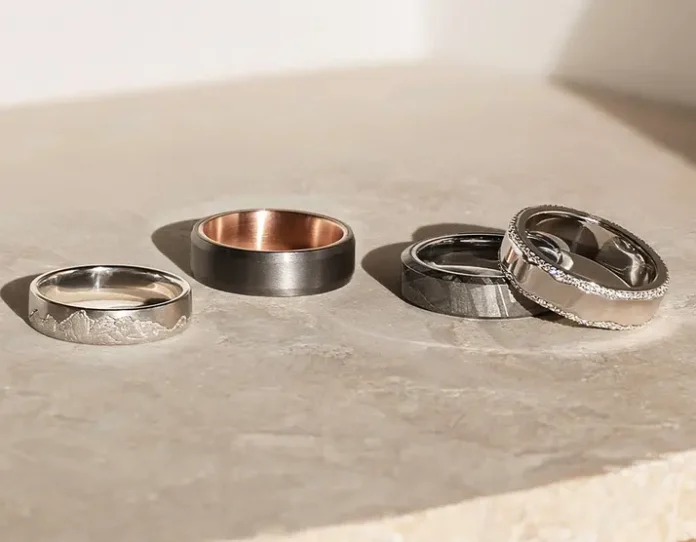In the last decade, I’ve noticed something curious in consumer spending patterns: people are increasingly torn between two very different investments—wedding rings and outdoor furniture. On the surface, these choices couldn’t be further apart. But if you look closer, both represent lifestyle priorities in the U.S.—commitment and personal celebration on one side, and comfort and leisure on the other. The question isn’t just what to buy, but what that choice says about where people see value.
Prioritizing Symbol Over Function
When I think about wedding rings, I often recall how even during economic downturns, jewelry sales maintained surprising resilience. That’s because a wedding ring isn’t a product—it’s a personal symbol. I once worked with a retailer who doubled down on emotional marketing during a recession and saw sales climb. People may cut vacations or delay furniture purchases, but a wedding still feels sacred. That’s why the spending conversation here isn’t just about price, but cultural permanence.
When Practicality Outweighs Sentiment
On the flip side, outdoor furniture tells a different story. Investing in outdoor patio furniture is all about utility, and for many families, lifestyle enhancement carries more practical weight than symbolism. Back in 2019, I advised a brand that pivoted toward “at-home experiences” during a travel lull, and sales grew 40%. Functionality, particularly in home investments, has become a major driver in U.S. households. Personal comfort can, in certain economies, outweigh sentiment.
Wedding Spending Trends Across Demographics
Data tells us millennials and Gen Z take different approaches to weddings. While older generations saw weddings as once-in-a-lifetime extravaganzas, younger couples are more budget-conscious. But here’s the interesting twist—while they cut venue costs, they still spend heavily on men wedding rings and bridal jewelry. It’s a concentrated spend philosophy: fewer frills, but strong emphasis on symbols that last decades.
The Outdoor Living Surge Post-2020
I’ll be blunt: 2020 changed everything. With restrictions on travel and more families nesting at home, the outdoor living market exploded. I saw companies who couldn’t move indoor furniture reinvent their offerings as patio essentials practically overnight. This isn’t a passing trend. Americans have redefined “leisure at home” as an investment space. Outdoor furniture is now lifestyle infrastructure, not just decoration.
Emotional ROI vs. Functional ROI
From a business strategy lens, I’ve learned to separate emotional ROI from functional ROI. Wedding rings carry emotional ROI—lasting significance, personal attachment, cultural weight. Outdoor furniture delivers functional ROI—comfort upgrades, usability for gatherings, increased home value perception. Smart companies don’t pretend one is better. They lean into whichever ROI resonates most with their target base.
The Long-Term vs. Seasonal Value
This is one tradeoff I’ve seen consumers wrestle with. A wedding ring’s value stretches across decades. Outdoor furniture, however, is more subject to wear, seasons, and trends. In consulting, I often ask clients: are you selling permanence or refresh cycles? Rings are “forever” markets. Patio sets are “replacement” markets. Knowing which side you sit on changes inventory risk dramatically.
The Lifestyle Identity Question
Truthfully, buying decisions aren’t just rational; they’re identity statements. Choosing to spend $8,000 on a wedding ring versus a high-end outdoor furniture set says something about what you prioritize: tradition vs. leisure, permanence vs. daily living. Companies that understand this identity equation craft stronger marketing campaigns because they’re selling more than goods—they’re selling lifestyle direction.
What the Future Holds for Both Markets
Looking ahead, both industries stand strong, but the differentiator will be adaptability. Jewelry brands need to embrace personalization and ethical sourcing, because future buyers demand transparency. Outdoor furniture must keep innovating on materials and design, especially as sustainability becomes mainstream. I’ve seen entire sectors fade by ignoring these shifts. These two? They’re evolving, not disappearing.
Conclusion
The wedding rings or outdoor furniture question isn’t trivial—it highlights how Americans balance emotional symbols with practical comforts. For businesses, the lesson is clear: neither market “wins.” Both thrive differently, and both require understanding the deeper motivations driving buyers. What you’re really selling isn’t a product—it’s a choice about lifestyle, permanence, and identity.
FAQs
Why do Americans invest heavily in wedding rings?
Because wedding rings symbolize permanence and emotional value, couples prioritize them even during tight budgets. It’s less about utility and more about cultural tradition.
Is outdoor furniture considered a long-term investment?
Not to the same degree as wedding rings. Outdoor furniture is functional but eventually needs replacing, often every 5–7 years depending on material quality.
How did the pandemic affect outdoor furniture sales?
Sales surged dramatically as families shifted spending into home comfort. “Staycations” and backyard upgrades redirected budgets that once went to travel.
Which purchase delivers better return: rings or furniture?
Wedding rings deliver emotional ROI that lasts decades. Outdoor furniture provides functional ROI in everyday comfort. The “better” return depends on the buyer’s priorities.
Are younger generations changing these spending habits?
Yes, millennials and Gen Z are cutting back on weddings but still investing in quality rings, while simultaneously boosting investments in outdoor living spaces.


